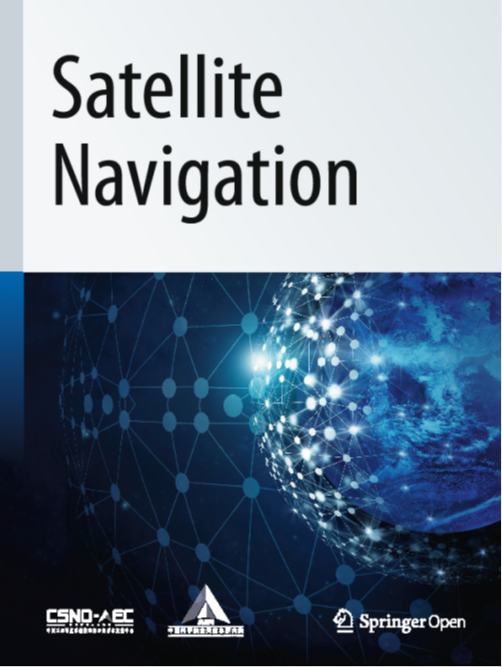提高带状区域变形监测精度一致性的双基站约束方法
IF 10.1
1区 地球科学
Q1 ENGINEERING, AEROSPACE
引用次数: 0
摘要
利用全球导航卫星系统(GNSS)相对定位进行形变监测的精度受到监测站和基站之间距离的很大影响。在长条形地区,台站间距的巨大差异导致多个台站的监测精度不一致。这给精确建模和预测变形模式带来了挑战。为解决这一问题,本文介绍了一种新颖的双基站约束方法。该方法将两个基站之间的基线长度约束整合到传统的相对定位模型中。首先详细推导了拟议方法的计算公式。然后,利用在 6 千米和 8 千米两个带状区域的八个监测站收集到的 28 天内的数据来验证所提方法的有效性。对监测精度一致性指标进行定量分析,并对监测精度与监测站间距的相关性进行假设检验。结果表明(1) 东、北、上一致性指标的中值分别从 2.14、1.41、1.83 降为 0.91、0.67、0.55,从 1.85、1.85、2.32 降为 0.69、1.00、0.(2) 监测精度与监测站间距之间相关系数的绝对值分别从 0.99、0.94 和 0.98 降至 0.09、0.36 和 0.32。用显著性水平为 0.01 的 t 检验表明,采用建议的方法时,监测精度与监测站间距之间没有显著的相关性。本文章由计算机程序翻译,如有差异,请以英文原文为准。
A dual-base station constraint method to improve deformation monitoring precision consistency in strip regions
The precision of deformation monitoring with Global Navigation Satellite System (GNSS) relative positioning is significantly influenced by the distance between the monitoring and base stations. In long strip regions, the considerable differences in station spacing lead to inconsistent monitoring precision among multiple stations. This presents a challenge to accurately model and predict the deformation pattern. To tackle this issue, this paper introduces a novel dual-base station constraint method. This method integrates the baseline length constraint between two base stations into the conventional relative positioning model. The formulae of the proposed method are first derived in detail. Then the data collected at eight monitoring stations in two strip regions of 6 km and 8 km over a 28-day period are used to validate the effectiveness of the proposed method. The quantitative analysis of monitoring precision consistency indicators and hypothesis testing on the correlation between monitoring precision and station spacing are conducted. The results show that: (1) median values of the East, North, and Up consistency indicators are reduced from 2.14, 1.41, and 1.83 to 0.91, 0.67, and 0.55 and from 1.85, 1.85, and 2.32 to 0.69, 1.00, and 0.87, respectively, indicating monitoring precision consistency improvement for two case studies; (2) the absolute values of the correlation coefficients between monitoring precision and station spacing decrease from 0.99, 0.94, and 0.98 to 0.09, 0.36, and 0.32. Using the t-test with a significant level of 0.01, it is demonstrated that there is no significant correlation between monitoring precision and station spacing when employing the proposed method.
求助全文
通过发布文献求助,成功后即可免费获取论文全文。
去求助
来源期刊

Satellite Navigation
Multiple-
CiteScore
19.40
自引率
6.20%
发文量
25
审稿时长
12 weeks
期刊介绍:
Satellite Navigation is dedicated to presenting innovative ideas, new findings, and advancements in the theoretical techniques and applications of satellite navigation. The journal actively invites original articles, reviews, and commentaries to contribute to the exploration and dissemination of knowledge in this field.
 求助内容:
求助内容: 应助结果提醒方式:
应助结果提醒方式:


